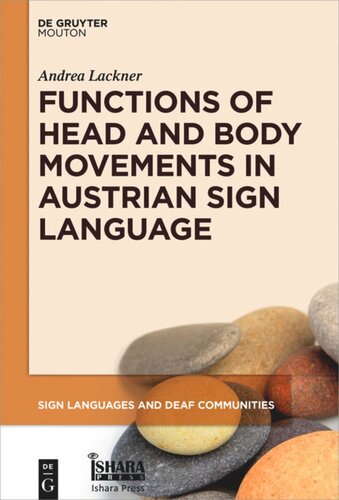

Most ebook files are in PDF format, so you can easily read them using various software such as Foxit Reader or directly on the Google Chrome browser.
Some ebook files are released by publishers in other formats such as .awz, .mobi, .epub, .fb2, etc. You may need to install specific software to read these formats on mobile/PC, such as Calibre.
Please read the tutorial at this link: https://ebookbell.com/faq
We offer FREE conversion to the popular formats you request; however, this may take some time. Therefore, right after payment, please email us, and we will try to provide the service as quickly as possible.
For some exceptional file formats or broken links (if any), please refrain from opening any disputes. Instead, email us first, and we will try to assist within a maximum of 6 hours.
EbookBell Team

5.0
88 reviewsResearch on nonmanual elements – or ‘nonmanuals’ – in sign languages has focused on both the possible functions and the occurrence (frequency and form) of these elements in recent years. As a matter of fact, research on nonmanuals is still a quite uncharted territory in Austrian Sign Language (ÖGS) today, which has also initiated the study given.
In order to identify head and body movements in ÖGS, these nonmanuals were determined and analyzed functionally via a new user-oriented methodology. Getting feedback of multiple native signers was a main part of this method. Accordingly, you will find the findings of this study in this volume: various functions such as negation, assertion, interrogativity, conditionality, and many more can be expressed nonmanually. Brand new insights into sign language research are given, as well as astonishing results: even (epistemic) modality can be expressed by particular head and body movements.